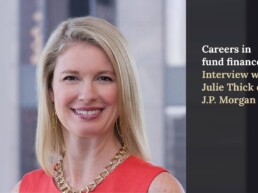US mid-market driving buzzing fund finance sector

Rory Smith, founder of Brickfield Recruitment, a talent search company focused on the sector, reviews the increasingly robust landscape for US mid-market fund finance
Originally published in Private Funds CFO magazine
As vaccine programs take effect and economies open up over the summer months, the US fund finance industry faces a somewhat sunnier financial climate than this time last year. In this article we give an update on some recruitment trends that are emerging in the mid-market, and talk to some leading fund finance specialists on the banking and legal sides about some of the market developments that are driving it.
The headline story for everyone, of course, is that the long wait for economies to open up and return to more conventional working practices is ending. As a recruitment firm dealing only with fund finance industry, Brickfield Recruitment is seeing clients in the US mid-market anticipate the need to bring new talent on board by actively hiring – we see this as a strong sign that a sustained period of growth is expected.
We are also seeing a lot of pent-up desire on the part of candidates who wanted to look at new career opportunities but decided to stay where they were during covid. This situation is now rapidly changing and there is a real sense of ambition out there again.
Our optimism is shared by the bankers we spoke to for this article. In the middle sector of the market, where the bulk of transactions take place, banks are indeed experiencing continued growth, led by strong demand for subscription facilities.
Brad Ellis, managing director and head of venture banking at Stifel Bank, tells us that this demand is being driven by the increasing amount of capital committed to private fund vehicles, as well as the effects of covid-19, which has seen subscription lending prove valuable by easing the aggregate capital call burden on LPs during very tough economic conditions. “PE portfolio companies needed support, while some LPs may have been experiencing temporary allocation issues due to the public market volatility we saw in 2020,” he says.

“PE portfolio companies needed support, while some LPs may have been experiencing temporary allocation issues due to the public market volatility we saw in 2020”
Bradley Ellis - Managing Director, Head of Venture Banking
Developing trends
Several other positive trends are also emerging in the US. Michael Sinclair, fund banking market leader at People’s United Bank, says he has seen an uptick in inquiries for loans to finance GP contributions, as well as NAV-based financing: “Many banks prefer to offer GP loans through their private banking group by advancing against the value of the GP’s equity and/or their other personal assets,” he says.

“Many banks prefer to offer GP loans through their private banking group by advancing against the value of the GP’s equity and/or their other personal assets”
Michael Sinclair - Head of Fund Banking at People's United Bank
Jonathan Sammarco, senior vice-president at People’s United Bank, adds: “For NAV-based facilities, we have seen a few banks lend against asset value only, but more commonly, banks are offering hybrid borrowing bases against a combination of portfolio assets and uncalled capital. Non-bank lenders remain active in the NAV financing marketing.”

“For NAV-based facilities, we have seen a few banks lend against asset value only, but more commonly, banks are offering hybrid borrowing bases against a combination of portfolio assets and uncalled capital. Non-bank lenders remain active in the NAV financing marketing.”
Jonathan Sammarco - Senior Vice President at People's United Bank, N.A.
An increasing number of funds, especially those with lower planned utilization, continue to warm to the idea of a fully or partially uncommitted facility to reduce overall costs for both banks and borrowers, says Mike Breaux, director of fund banking at Stifel Bank.
There is an increased appetite for the simplicity of blanket advance rates as opposed to a traditional LP-by-LP borrowing base, Breaux says, structured to step up over time to offer similar availability or more compared to a traditional borrowing base depending on LP composition: “Given the low risk profile of these facilities and the increasingly important role they are playing on some bank balance sheets, we expect to see lenders continue to adapt and provide borrowers with the additional capacity they desire going forward.”

“Given the low risk profile of these facilities and the increasingly important role they are playing on some bank balance sheets, we expect to see lenders continue to adapt and provide borrowers with the additional capacity they desire going forward.”
Mike Breaux - Director, Fund Banking at Stifel
The fund finance practices at US law firms are also finding themselves in a busy period, helped in no small part by a healthy mid-market. Michael Mascia, chair of Cadwalader’s fund finance practice, says: “Our portfolio of existing deals is very active with upsizes, extensions and the LIBOR transition. This type of work is keeping a lot of associates active.”

“Our portfolio of existing deals is very active with upsizes, extensions and the LIBOR transition. This type of work is keeping a lot of associates active.”
Michael C. Mascia - Partner, Cadwalader Charlotte
ESG funds
US fund finance players also continue to report growth in both volume and diversity ESG-linked facilities as firms and lenders increasingly view their businesses through an ESG lens.
In the mid-market, according to Sinclair at People’s United Bank, ESG criteria may be included among many factors influencing a manager’s selection process. “More recently, dedicated ESG funds have become common in the market in response to investor demand,” he says, adding that clean energy is an area that has benefited from capital inflows, and has also generated attractive returns.

“More recently, dedicated ESG funds have become common in the market in response to investor demand”
Michael Sinclair - Head of Fund Banking at People's United Bank
As PE funds continue to add an ESG angle to their investing strategy, subscription lenders are likely to compound that effect with ESG-linked facilities to further incentivize ESG initiatives. “We have already seen this start to take hold in the US and it will likely be an increasing trend,” adds Stifel’s Ellis.

“We have already seen this start to take hold in the US and it will likely be an increasing trend”
Bradley Ellis - Managing Director, Head of Venture Banking
Fund finance recruitment going strong
The US market’s optimism would appear to be reflected in the hiring activity of banks and law firms in the fund finance sector. This year’s strong start to the fund finance industry has carried on as summer approaches. The long wait for economies to open up and a return to more conventional working practices is almost over, and Brickfield is already seeing clients in the US anticipate the need to bring new talent on board, particularly among those concentrating on the mid-market. There has also been a lot of pent-up desire on the part of candidates who wanted to look at new career opportunities but decided to stay where they were during covid. This situation is now rapidly changing and there is a real sense of ambition out there again.
This is also the season for spring bonuses, and for the lawyers at least, the coffers are a little fuller than last year. “Law firms are trying hard to make sure the associates know their hard work is appreciated,” says Cadwalader’s Mascia.

“Law firms are trying hard to make sure the associates know their hard work is appreciated”
Michael C. Mascia - Partner, Cadwalader Charlotte
Which makes sense. Competition for the best fund finance talent is the highest we have ever seen it, and after the belt-tightening of 2020, both banks and law firms are keenly aware of the need for healthy incentives this year in order to both attract and retain the very best.




